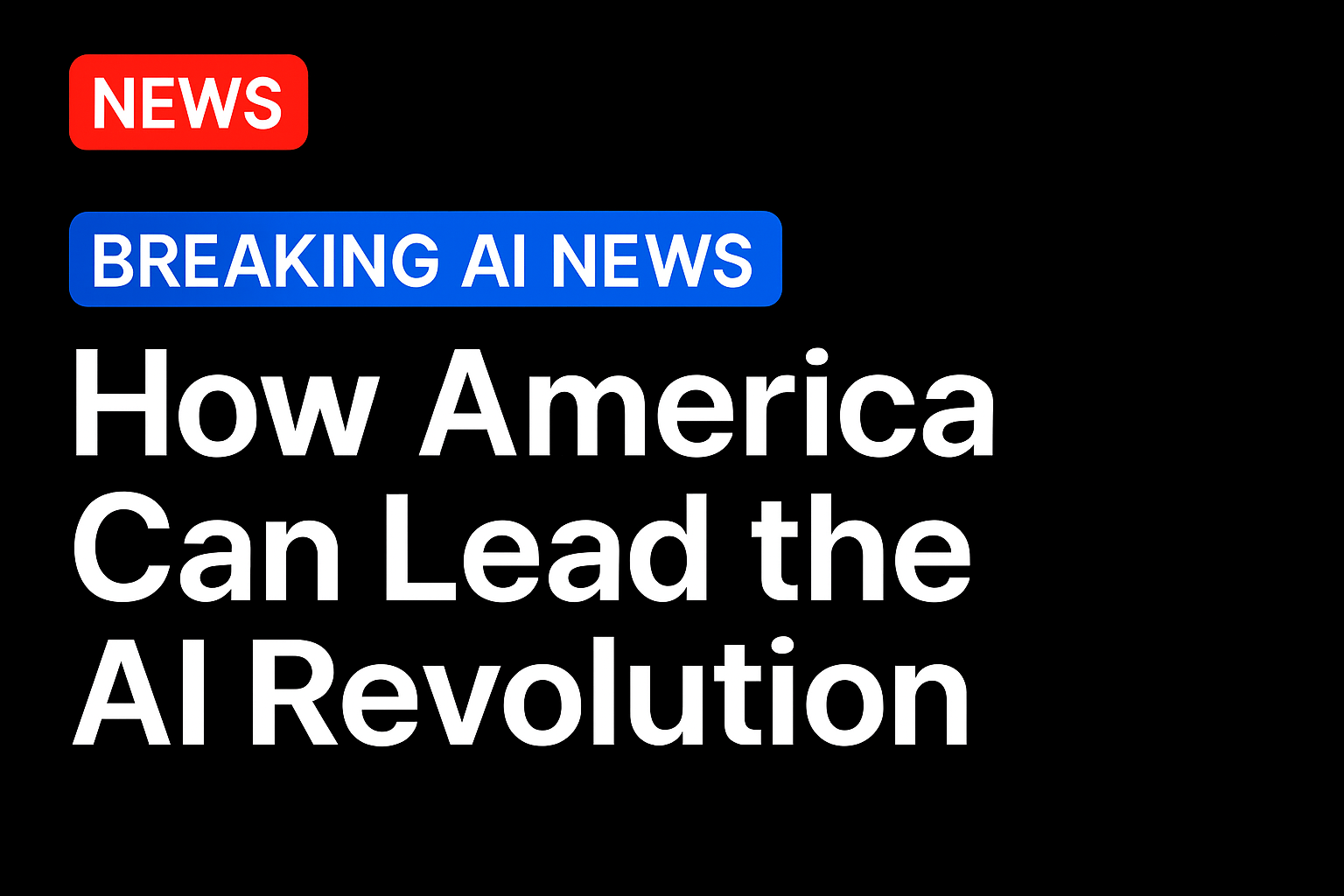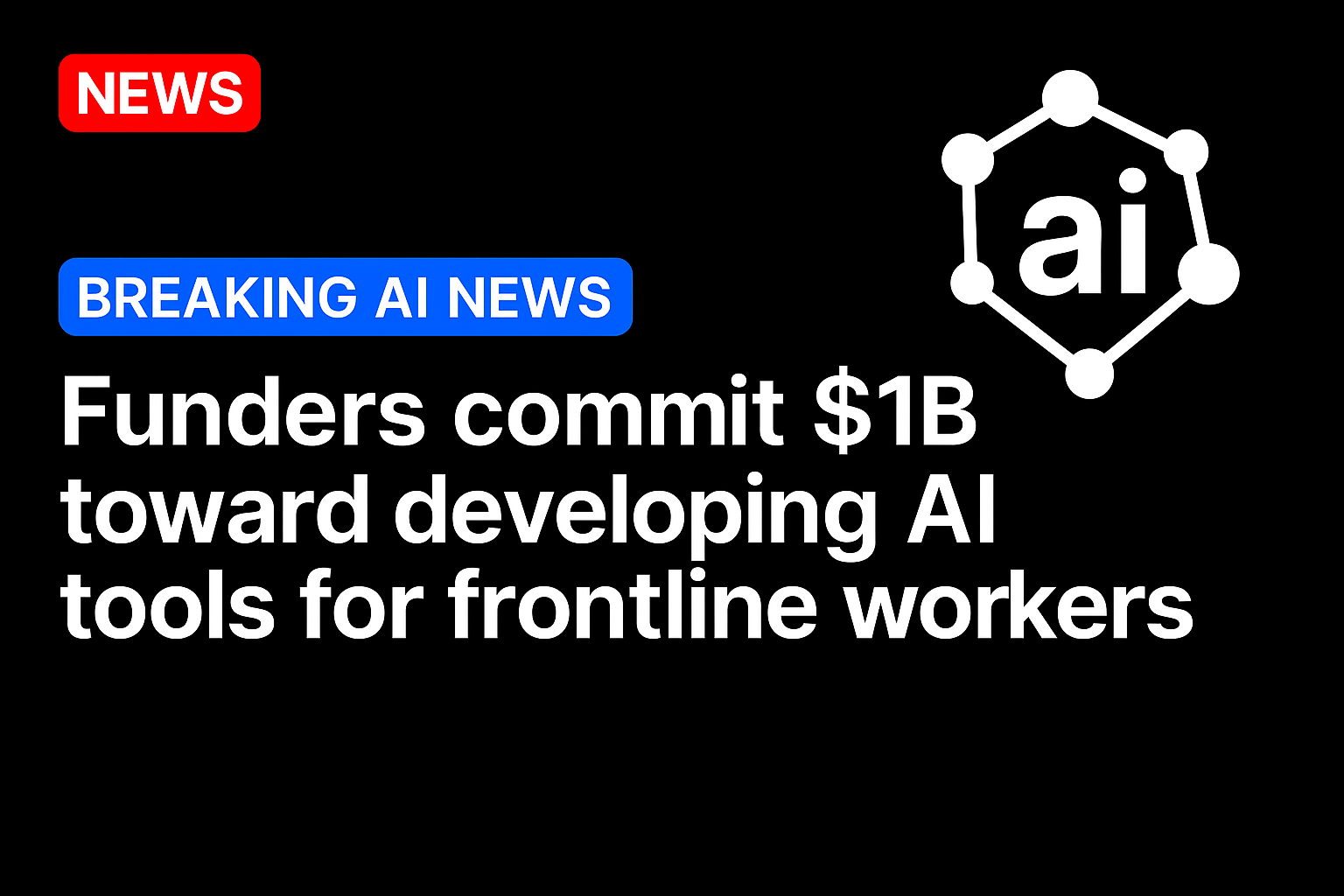When the Trump administration released its AI Action Plan last week, the message was clear: “the United States is in a race to achieve global dominance in artificial intelligence.” This is not simply a competition over who has the best algorithms or semiconductors – it is a race to shape the future of medicine, energy, education, media and more.
It was a bold and necessary declaration. The 28-page plan outlines more than 90 policy actions that the administration says can be implemented within a year to build the infrastructure for data centers and to make U.S. software and chips the standard platform for AI globally. It’s a Marshall Plan-like vision to mobilize private capital, reshore computer supply chains and create a Chief AI Officer Council, all in the service of advancing American AI.
But success will require more than technical dominance. It will require global leadership and strong industry collaboration – linking U.S. innovation with international engagement, cross-sector partnerships and a bold diplomatic strategy.
For decades, America’s leadership in emerging technologies has rested on more than Silicon Valley’s innovations. It has drawn strength from the integrity of the U.S. economic system, our democracy, trust with our allies and the widely held belief that American power would be exercised for the greater good. That’s what sets us apart from authoritarian competitors – and it’s why other nations have looked to the U.S. as a partner, not just a provider.
Now, we must bring that same approach to the AI era.
American AI systems are grounded in principles of pluralism, transparency and the free flow of information. By contrast, other global AI models, such as Deep Seek, are designed to conform to Chinese Communist Party-defined narratives that prioritize control, surveillance and censorship. This distinction is critical – and our government must actively communicate that message.
The telecommunications race a decade ago offers a powerful warning of what could go wrong. Chinese telecoms firms such as Huawei captured global markets by offering lower-cost infrastructure, while the U.S. struggled to mobilize. AI is even more consequential. This isn’t just about hardware. It’s about embedding ethical systems into AI decision-making that could affect outcomes in courts, classrooms and markets around the world. If countries adopt AI models shaped by opaque data and centralized control, the future global digital landscape will reflect those values.
While other nations are advancing legislation to regulate AI – such as the EU’s AI Act and Canada’s proposed AI and Data Act – the United States has opted for a more open, market-driven approach, a strategy designed to foster innovation. But removing guardrails also carries responsibility: We must ensure that the importers of our sensitive technologies are aligned with our values and interests in how it is used.
To succeed, we need to pair innovation with diplomatic tactics that lead to greater adoption of U.S. technology. China has invested heavily in steering the United Nations and other international bodies toward its standards. The U.S. must push back, advocating for transparent, rules-based governance around AI norms. If existing organizations do not align with our vision, we must continue to pursue our objectives through alternative international bodies such as the Group of Seven, the forum of seven of the world’s largest advanced economies; the Asia-Pacific Economic Cooperation forum; and the Organization for Economic Cooperation and Development – or consider forming a new coalition better suited to advancing our global goals.
We must also use the tools of economic diplomacy at our disposal, such as the Development Finance Corporation, the U.S. government agency that partners with the private sector to mobilize capital in emerging markets, which has allocated resources to develop digital infrastructure overseas.
The U.S. Departments of Commerce, State and the Export-Import Bank, the official export credit agency of the United States, must work together to advance trustworthy AI abroad. Exporting computer infrastructure is only half the job. Countries also need training, legal frameworks and support.
In many developing countries, there is real demand for AI solutions in public health, agriculture and education. If the U.S. invests in co-creating such applications, rather than just trying to sell AI platforms, we not only gain market share, we deepen trust.
Equipping our diplomats with AI fluency will be essential. They must be able to explain the value of American AI, understand local priorities and broker responsible partnerships.
AI is the 21st century’s Space Race, and the Trump administration deserves credit for charting an ambitious course. Winning it will require more than innovation – it will take global engagement. By working with allies, leveraging diplomacy and aligning public and private sector efforts, the U.S. can shape an AI future that advances both global prosperity and American strategic interests at home.
Source: https://www.usnews.com/




